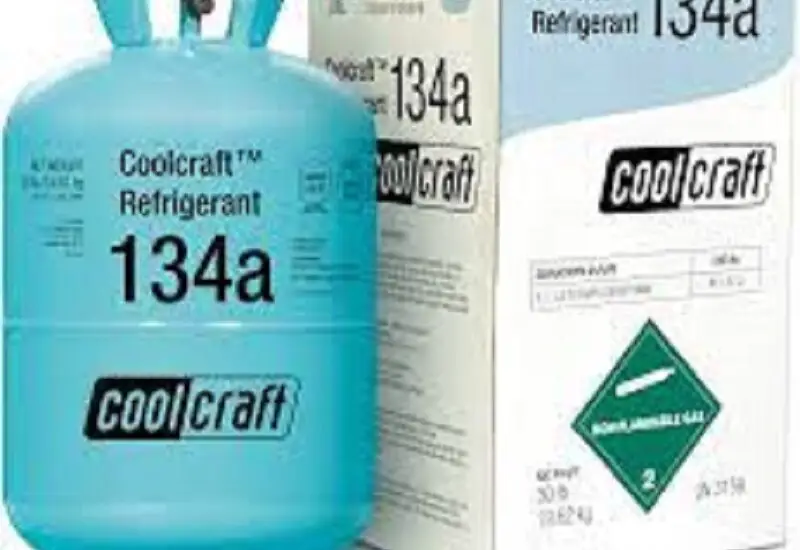Refrigerant nomenclature, it sounds like a mouthful, doesn’t it? Well, stick with me here. It’s the naming system used for the juices that make our air conditioners, refrigerators, and other cooling equipment tick. Intriguing, right?

Table of Contents
The Importance of Understanding Refrigerant Nomenclature
So, why should we care about refrigerant nomenclature? Simple. It’s key to identifying properties and safety considerations of the refrigerants. Like understanding the ingredients in your grandmother’s secret recipe!
Identifying Refrigerant Properties
Imagine picking up a can of soda without any label. Scary thought, huh? Similarly, knowing the nomenclature can reveal refrigerant properties like boiling point, pressure, and more.
Safety Considerations
Ever thought about what could happen if you mishandle a refrigerant? Yep, not a pretty picture. That’s where nomenclature steps in, providing vital info for safe handling and use.
Components of Refrigerant Nomenclature
Refrigerant nomenclature isn’t some alien language. It’s a simple system of prefixes and numbers, each telling us something about the refrigerant. It’s like a secret code waiting to be cracked.
Understanding the Refrigerant Numbering System
The refrigerant numbering system: it’s the backbone of refrigerant nomenclature. It’s the secret decoder ring for understanding what’s what in the world of refrigerants.
Basic Structure of Refrigerant Numbers
The basic structure of refrigerant numbers is a bit like a sandwich. There’s a prefix at the start, and then there are digits that follow. Each part of this sandwich gives us a piece of the refrigerant puzzle.
Prefixes in Refrigerant Numbers
Prefixes in refrigerant numbers are like the appetizer of the main meal. They help us know the type of the refrigerant. It’s a bit like knowing if you’re about to bite into a burger or a hotdog.
The Meaning of Digits in Refrigerant Numbers
The digits in refrigerant numbers, that’s the meat of the sandwich. They give us the scoop on the molecular composition of the refrigerant. It’s like knowing what’s stuffed inside that burger you’re about to enjoy.
Special Cases in Refrigerant Numbering
But wait, there’s more! Just like those special orders at your favorite fast-food joint, there are special cases in refrigerant numbering too. Unique refrigerants that don’t quite fit the mold.
Types of Refrigerant Designations
We’ve got two main types of refrigerant designations: single component and blended refrigerants. Think of them as solo artists and bands in the music world.
Single Component Refrigerants
Single component refrigerants, they’re the solo artists of the refrigerant world. They stand alone, doing their job without any help from other components.
Examples of Single Component Refrigerants
Imagine the Beyonces of the refrigerant world – R-22, R-134a, R-410a. Each one is a star in its own right, with unique properties that make it shine.
Blended Refrigerants
Blended refrigerants, on the other hand, are like bands. Each member brings something to the table, creating a performance that’s greater than the sum of its parts.
Zeotropic Blends
Zeotropic blends are like improv jazz bands. Each component has its own rhythm, its own tempo. They don’t boil at a single temperature, adding a unique twist to their performance.
Azeotropic Blends
Azeotropic blends? Think synchronized swimmers. They move together, boiling at a single temperature. It’s a harmonious dance that makes them a popular choice.
Click here for more information on refrigerants – – Articles on Refrigerants: The Ultimate Guide to Understanding Them
The Role of the American Society of Heating, Refrigerating and Air-Conditioning Engineers (ASHRAE) in Refrigerant Nomenclature
So, who’s the conductor of this orchestra? It’s ASHRAE, leading the way in refrigerant nomenclature, setting standards, and shaping the future.
ASHRAE’s Standard 34
ASHRAE’s Standard 34 is the rule book for refrigerant nomenclature. It assigns the numbers, sets the safety classifications. It’s like the rulebook for a sport, guiding how the game is played.
Safety Classifications in ASHRAE Standard 34
Think of safety classifications as a traffic light system. They tell us how to handle and use refrigerants, providing crucial guidance for health and safety.
Other Contributions of ASHRAE to Refrigerant Nomenclature
But ASHRAE’s role doesn’t stop there. From developing new standards to adapting to environmental changes, they’re always at the forefront, shaping the industry’s future.
The Transition to New Refrigerant Nomenclature
Change is the only constant, and it’s true for refrigerant nomenclature too. New environmental and safety considerations are driving a transition to new nomenclature. It’s like evolving from cassette tapes to streaming music.
The Rationale Behind the Transition
Why the need for a new tune? Well, there’s a two-part harmony at play: environmental considerations and safety concerns.
Environmental Considerations
Our world is changing, and refrigerants need to keep pace. The new nomenclature is part of a move towards greener, more sustainable refrigerants. It’s like switching to electric cars from gas-guzzlers.
Safety Concerns
Safety first, always. As we understand more about refrigerants, the nomenclature is evolving to reflect these insights, ensuring safer handling and use.
Impact of the Transition on the HVACR Industry
So, what does this change mean for the HVACR industry? It’s a bit like learning a new dance. There’s a learning curve, but the payoff is well worth it.
Conclusion: The Future of Refrigerant Nomenclature
p>So, where are we heading with refrigerant nomenclature? The future is bright, with new trends emerging and a continued commitment to staying updated with changes.
Emerging Trends in Refrigerant Nomenclature
New trends in refrigerant nomenclature are like the latest fashion styles – they’re exciting, fresh, and a sign of the times. From eco-friendly refrigerants to ones with unique properties, there’s plenty to look forward to.
The Importance of Staying Updated with Refrigerant Nomenclature Changes
With all these changes, staying updated is crucial. It’s like keeping up with the latest tech gadgets. If you don’t, you risk being left behind. So, keep your eyes open and your ears tuned for the latest in refrigerant nomenclature!
